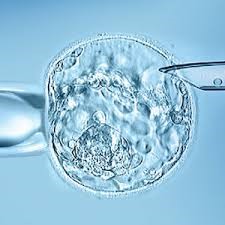PGT-A Test (pre-implantation genetic aneuploidy testing) is performed on a 5-day-old embryo by NGS method (next generation sequencing). Before the embryo is transferred to the uterus, all the chromosomes of the embryo are tested. Such diagnostics allow detecting changes in the embryo’s chromosomes, which can be caused by the child’s genetic pathologies. Thus, it is possible to evaluate the embryo’s potential for further development and select an embryo with a normal set of chromosomes.
Who should take PGT-A testing?
- Patients with multiple pregnancies which haven’t resulted in birth;
- Patients with repeated unsuccessful IVF cycles;
- If the woman’s age is over 35 years, the man’s age – over 40 years. Couples with an age factor are more likely to have gametes (reproductive/sex cells) with an altered set of chromosomes. Embryos formed from such sex cells mostly fail to implant in the lining of the uterus or their development stops during the first trimester of pregnancy.
- For patients whose cells have changes in the structure of chromosomes, as this may be the reason for infertility, repeated pregnancy loss or the birth of a child with pathologies.
How does a PGT-A test take place?
After the medical fertilization cycle, the embryos are cultured until the fifth day, until the so-called “blastocyst” is created. On the fifth day, a biopsy of the embryo’s trafectoderm (2-8 cells) is performed, which does not harm the embryo and its development. However, the analysis of these obtained cells makes it possible to determine whether the embryo is suitable for transfer to the uterus.
The DNA material of the embryo is analyzed with special reagents and all the chromosomes of the embryo are read. The obtained results are displayed in a specific computer software in the form of a customised graph.







